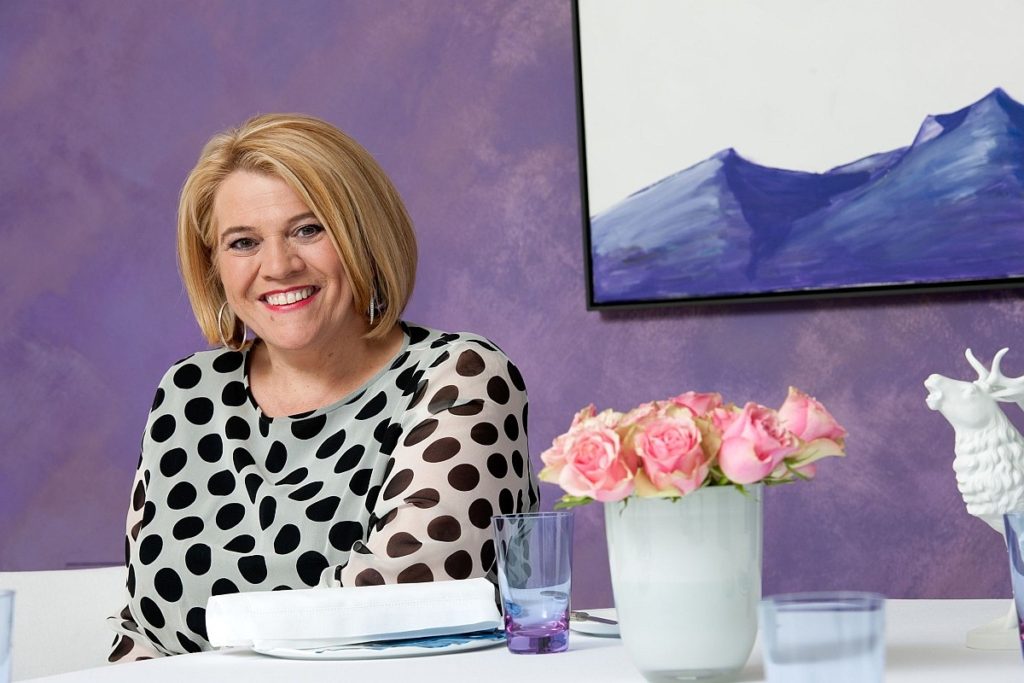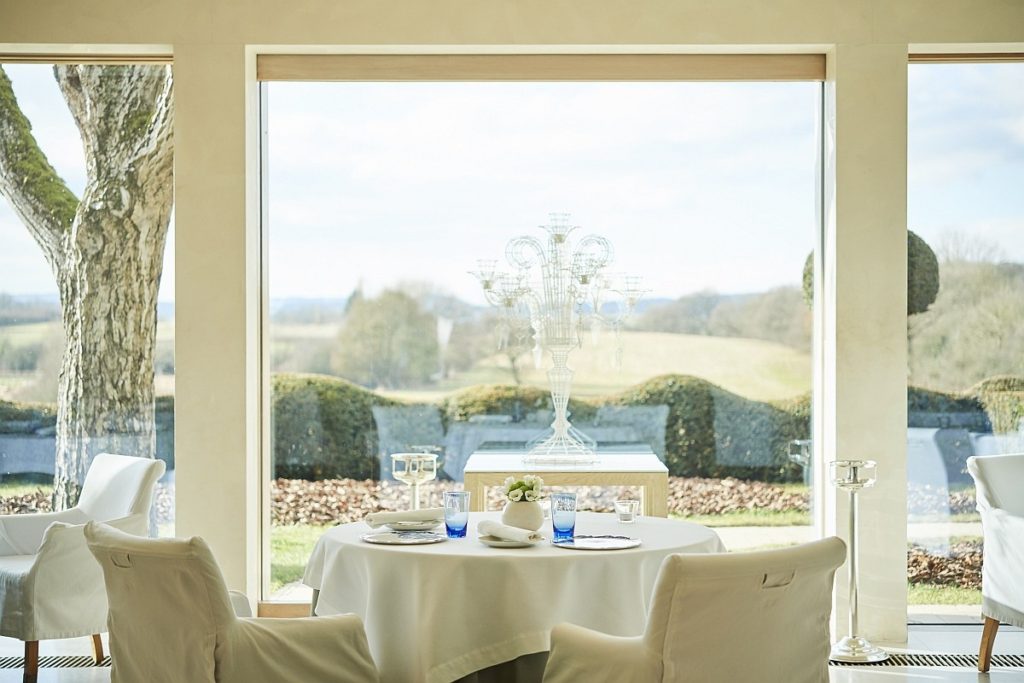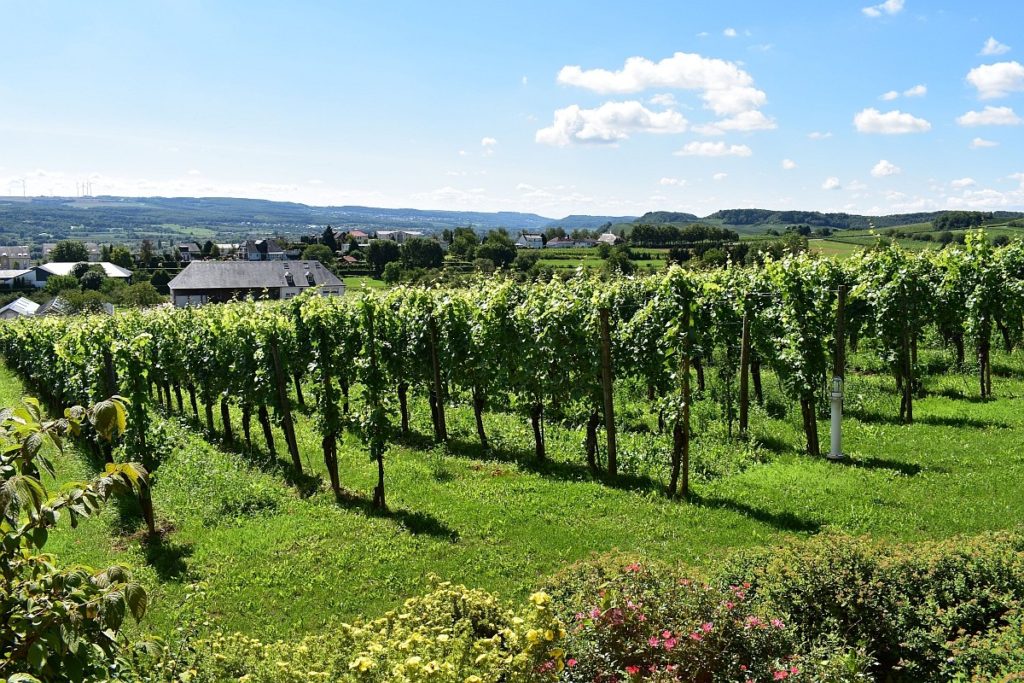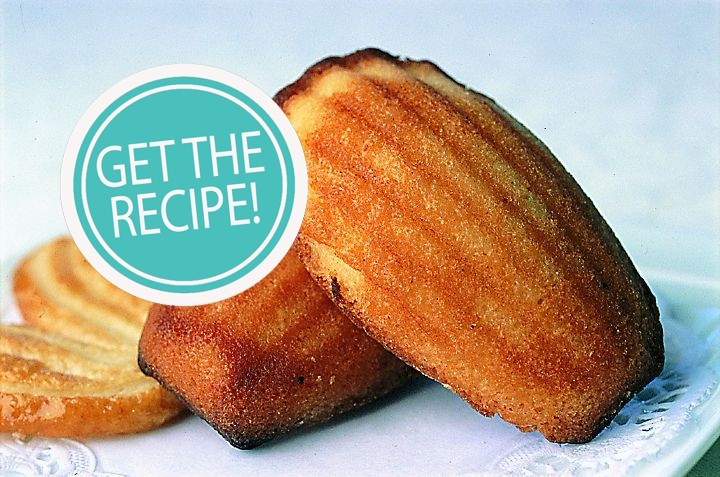Her eyes are as warm and golden-brown as her signature madeleines. They sparkle with warmth and passion, and a smile lights up her face as she deftly scoops a batch of these petite shell-shaped cakes from the oven and arranges them on a plate.
Léa Linster, Luxembourg’s celebrity chef is in her favourite place — the kitchen of her mansion-turned-restaurant. She is about to conduct her regular evening ritual — orchestrating the dinner service and ensuring that every detail is perfect, from the tables set with exquisite, hand-painted dishes, crystal glasses and silver cutlery, to the food itself, a symphony of flavours, textures and colours.
As Luxembourg’s first female chef to win the Bocuse D’or — the most prestigious culinary award in the world — Léa Linster put the miniature country — situated at the crossroads of Germany and France — on the gastronomic map of the world. She still reigns supreme as the maître cuisinier of the Grand Duchy, which can hold its own in culinary terms with neighbouring France.
Her eponymous flagship restaurant is in the charming village of Frisange, a ten-kilometre drive from the heart of Luxembourg City, capital of the picture-postcard country blessed with ideal conditions for good farm products and vineyards. It is also 800 metres from the French border, attracting large numbers of French tourists accustomed to the highest standards in food and wine.
Earlier in the afternoon, the cookbook author and popular guest on German TV shows responds to my questions over cups of cappuccino. She talks animatedly about Luxembourg’s culinary heritage and her own road to stardom.
“We use Luxembourg’s local ingredients,” she says when asked about the secret of her fine cuisine. “What we raise and grow. What the soil and climate give us. My madeleines, for example, are made with the best Luxembourg butter and lots of love.”

In her fifties now, she recalls the days — well before the euro became Europe’s standard currency — when the restaurant was her family home. It was also the centre of a family business that included a café, restaurant, gas station, bowling alley, liquor and tobacco shop and currency exchange bureau for tourists from France and Germany.
“My father was a pastry chef and an artist — in the art of living,” she says, adding that she inherited her taste for a refined lifestyle from him, while her perseverance and determination come from her mother.
The third of four siblings, she went to France to study law, but came back to reunite with her true love — the family’s restaurant business.
“My heart was in this business, my roots are here, and I can use all my talents here,” she says.
“Sliding glass doors offer guests relaxing views of the gardens and vineyard..”
After buying the house from her mother in 1985, she spent a million euros on refurbishing it into the temple of fine dining it is today. “I found a bank that had faith in me as a businesswoman,” she says of her search for a loan in the days when women entrepreneurs were relatively few and far between.
Today, sliding glass doors offer guests relaxing views of the gardens and vineyard, glowing in jewel tones of green in the summer afternoon sun. The 30-year-old kitchen has been modernized but she says the quality of the food is the same as in her parents’ time.

Winning the Bocuse d’Or — the equivalent of an Olympic gold medal in the world of gastronomy — in 1989, and a Michelin star in 1987 were the two the high points of her career.
“I made the lamb and the lamb made me,” she laughs, referring to the Lamb Bocuse D’Or, the centrepiece of the award-winning menu she still serves in this restaurant.
As guests sit down to dinner, sommelier Jonathan Martinez helps them choose from the 800 wines in stock in the cellar. He pours a glass of 2015 Pinot Noir Wellestein Foulschette from the estate of Léa’s friends Aounk and Mathis Bastian. With its deep ruby red colour and fruity taste, it’s a perfect partner for the rosemary-spiced, potato-encrusted Lamb Bocuse D’Or.
The next day, intrigued by the fact that so much of Luxembourg’s food and wine come from the bounty of the land, I make my way to Remich, a tiny village in the Moselle River valley, to see the winery that produced the Pinot Noir.
Anouk Bastian greets me at the door of her wine tasting centre. “Moien,” (hello) she says in her native Luxembourgish. The tall, blonde, multi-lingual one-time barrister is the chatelaine of Domain Mathis Bastian, the wine estate that has been in her family’s hands for five generations. As elegant and effervescent as a crémant, Luxembourg’s version of champagne, she takes me through the lush green vineyard, explaining that she and her father Mathis, who run the operation, believe in cultivating grapes with minimal intervention and perfectly in harmony with nature.

She holds up a cluster of grapes, glowing like translucent green jewels on the vine, explaining that between the rows of vines they plant a variety of herbs including white and red clover, thyme and sage to replenish the earth with minerals and nourish the grapes. This natural fertilizer, the brilliant Mediterranean-type sunshine, moderately warm summer temperatures and chalky, clayey limestone soil combine to produce ideal conditions for high quality grapes.
Later, we visit the wine-tasting centre of the Domaine, a mansion with a pale peach and blue exterior. A glass sculpture in the shape of an orange with delicately etched segments dominates the tasting room. Reflecting the natural light that pours in like liquid gold, it creates a delicately luminous backdrop for the “ceremony” of wine tasting.
Anouk pours several wines for me to taste, and chats about her brief foray into law before joining her family business. “I came back to my beloved wine region nearly 20 years ago,” she says, adding that this was her passion and true calling.
As I wave “addi” (goodbye) and leave for my next Luxembourg adventure — a gourmet lunch and river cruise on the Moselle river that flows through the heart of the wine region — I reflect on the recipe for Luxembourg’s gastronomic excellence.
It’s a blend of fresh, locally sourced ingredients, the care and nurture of plants and animals, and the creativity, artistry and passion of people like Léa Linster and Anouk Bastien.
Together, they represent the epitome of gracious living — the historical legacy of the country.



